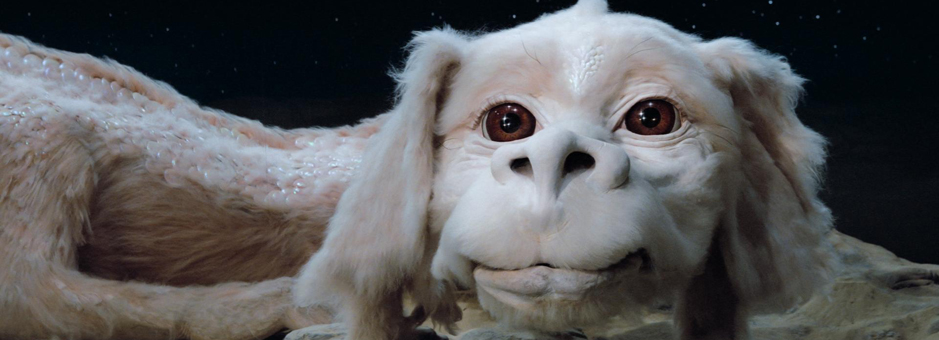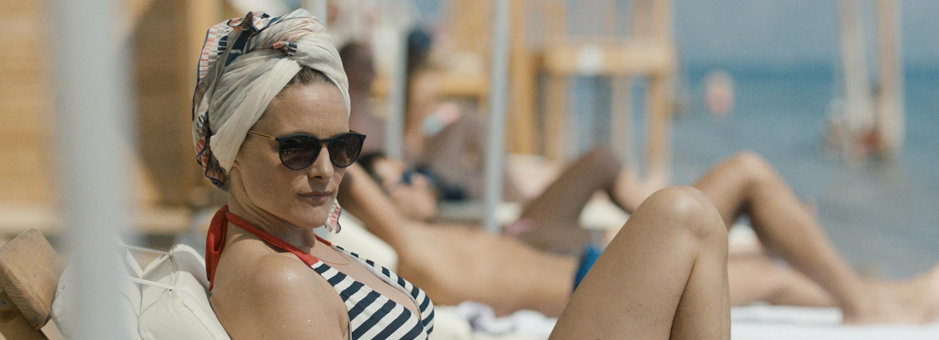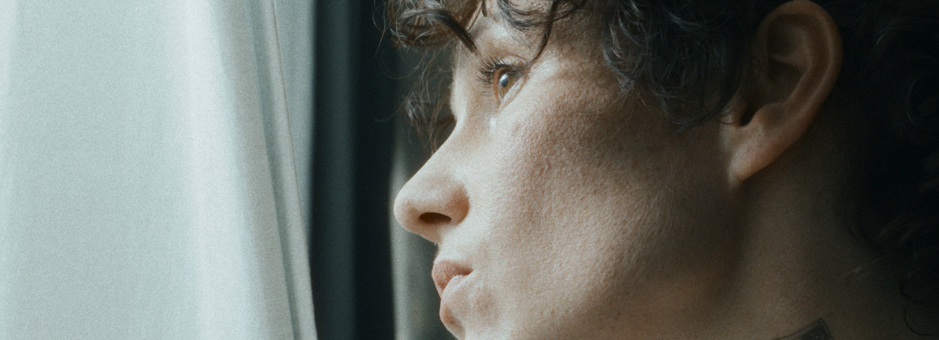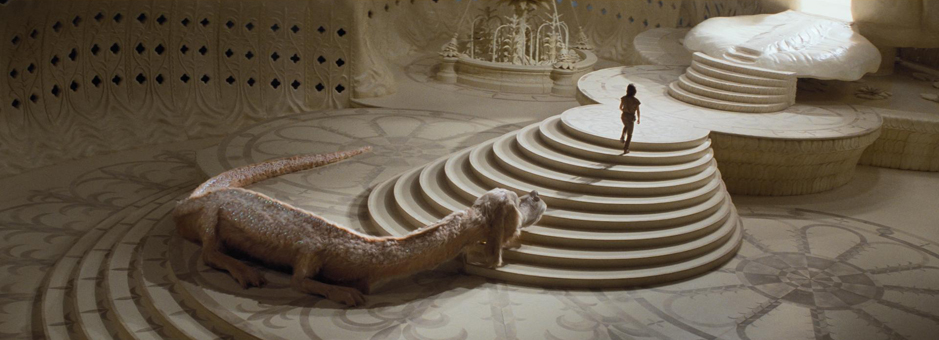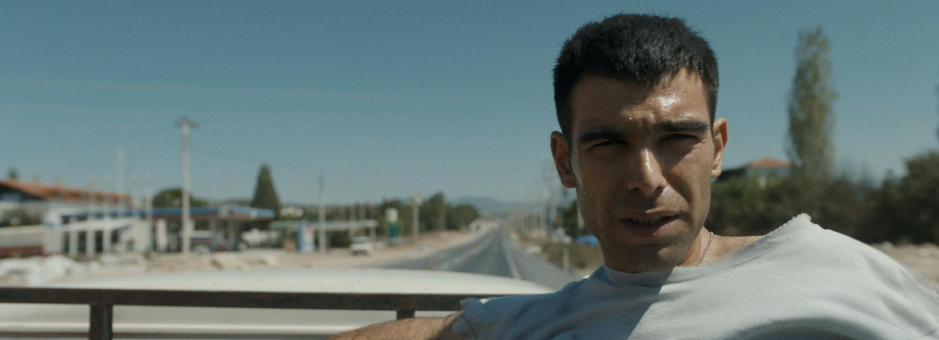Meet The Colourist
Aljoscha Hoffmann
Colourist, CinePostproduction, Munich
Aljoscha is a colourist at CinePostproduction in Munich. While he mainly works on new feature films and TV series, he recently had the opportunity to grade the remastering of The Neverending Story, director Wolfgang Petersen’s hit film from 1984.
What is your background? How did you become a colourist?
After I graduated from school, I wanted to become a DoP. As a young boy I was used to be on film sets because my father, who is now retired, worked as a Production Designer. So I was in touch with the magic of cinema and film very early. To become a DoP I decided to study at the Filmakademie Ludwigsburg. Prior to starting there, I did a year as an intern and worked as a video operator on set. Then, I did an internship at the commercial post-production company VCC in Düsseldorf. After six months there, they asked if I wanted to become a trainee. I said yes. That’s how I came into contact with professional colour grading for the first time. When I first saw this dark suite and crazy looking control surface I was complete hooked.
After three years as a trainee I became a Junior Colourist at das Werk, who had acquired VCC. Nearly two years later I started at CinePostproduction in Munich.
How did you learn your craft? Tell us about your career progression.
Because there was no colourist at VCC, I jumped into that gap. They had a Baselight system in-house so I learned the software by myself. After a while, I was able to prepare the colour sessions for the senior freelance colourists and watch the sessions with the clients. I did the conforms, reconforms and renders, as well as colouring additional takes and improving shapes. From this varied range of tasks, I learned a lot about colour: the craft of grading and also how to handle clients. In the evenings or weekends I would colour every bit of footage I could get my hands on. I coloured a lot of student projects and low-budget commercials during that period.
Can you tell us more about CinePostproduction and colour there?
Cinepostproduction was founded in 2015 and is one of the leading post-production facilities in Germany. We do mainly feature films, TV movies, TV series and a lot of film restoration. We have four Baselight suites and one Baselight ASSIST workstation, which we maintain using FilmLight’s Customer Support Upgrade Programme. Two of the Baselight suites are grading cinemas with 2K/4K projections, one is a 4K HDR suite equipped with a new Baselight TWO system and a Sony X300, and the last one is an HD suite. We are also running two FimLight FLUX Storage systems.
Baselight allows us to handle big feature films from 2K/4K cinema SDR grading up to 4K HDR versions without technical problems; it is a very reliable system. With multiple Baselight systems we can handle big jobs and switch suites very easily.
I’ve been working on Baselight for nearly ten years now and it is definitely my favourite grading tool. I really like its colour management and its very, very stable performance. When the Base Grade tool came up, it was really a game-changer for me! And many other colourists, I’m sure.
What is the post industry like in Germany? Do you share knowledge with other facilities?
The market here is very competitive because in the last few years the pricing across the whole industry in Germany has been decreasing constantly. So every post house is fighting to get the jobs. Personally, I have friends in other post facilities and I also share knowledge and experience with other colourists. I would actually love to see more exchange and some community building. How about a Postproduction-Association for Germany?
What kind of projects do you work on?
I mostly work on feature films and TV series. I would split it 80% feature films, 15% TV content and 5% in restoration. Even if my daily business is focused on feature films, it is also fun to work on restoration from time to time. When working with old film material, I am really impressed with what you can get out of the footage, whatever the period.
Last year, I had the chance to work on the remastering of The Neverending Story. We did a completely new scan of the original negative film in 4K for a UHD-HDR remastering. It was a real pleasure to grade this beautiful 35mm film, shot by Jost Vacano.
One of the main challenges was to keep the original intention while transferring the film to the HDR colour space. I did a lot of testing with the material to find a way to keep the feeling of a 35mm film but at the same time pushing the film, so that it will work in HDR.
Another big challenge was the old VFX shots, because we only have dupes and not the original negative. The VFX shots in particular have to look very good to be able to immerse yourself in the world of Phantasia. To achieve this, many layers with keys, masks, tracking and effects were necessary, since the foreground and background sometimes behaved completely differently. The stacks were quite big in the timeline but it was not a problem to handle this in Baselight.
For this project it was not only about grading but also a lot of texture work. Therefore the Base Grade tool and the Texture Equaliser were really helpful. I worked in T-Log/E-Gamut and that was very helpful when creating the different deliveries.Any other projects that you’d like to talk about?
Last December, a friend of mine, who is studying cinematography at the well-known Ludwigsburg Filmakademie, asked me if I could grade the short film ELLI. After I watched the rough cut I immediately answered yes. The film was shot with a Sony Venice and an Alexa Mini in 4K with Zeiss anamorphic lenses, but the delivered format was in 4:3. We tried to achieve a very cinematic, gritty look. Such an interesting concept and also really fun to grade!
Last year, I also graded the drama I was, I am, I will be from the Student Academy Award-nominee Ilker Catak. The film takes place in Turkey and Germany and is about the pilot Marion and her younger Turkish lover Baran. It was a very intense creative process and we tried a lot of things in the grading, especially with grain. In the end, we got a very filmic, natural look with original 35mm grain on it. For us the original grain felt more natural than the digital. The film won a Bronze Lola for Best Picture this year at the German Film Awards.Can you tell us about a particular project grade that you admire and explain why?
When I saw Chernobyl, I was really impressed with the look and texture of the pictures. The look perfectly conveyed the unpleasant atmosphere. In a positive way, it felt really uncomfortable while watching it.
What are the best creative tools in Baselight?
Like I said before the Base Grade tool was really a game changer for me. I am so much faster with it and it feels so natural to use. I also really like Texture Highlight, Texture Equaliser and the Texture Blend mode.
But maybe it is the combination of the tools available that allow us, as colourists, to give each project its own character.What is the typical workflow for a project at your facility?
For most projects, we are involved from the very first camera test to the final DCP/Mastering.
A common workflow here at Cinepostproduction is that the rushes from set are sent directly overnight to our storage via our very fast fibre connection. From there we do an LTO backup and our dailies. colourist can start immediately the next morning with grading. So no one has to wait until the hard drives arrive from set, the files are copied and only then do you starting working. This connection to the lab is a very effective and secure method for the overall dailies workflow.
When finally the DoP and I get the chance to have a few hours to play around, we develop a LUT for on set and/or for our dailies workflow. So our dailies colourists are already in the right direction for the look. The dailies colourist is in contact with the DoP everyday while shooting. If my time allows, I make the dailies myself, but unfortunately this is not always possible. After the shooting is over, we will be involved again when the editing is complete; we do the conforming and then the final grading. We can offer all kind of deliveries in-house. At the moment we are experimenting with BLG workflows to explore the potential we see there.What do you do when you are not grading? What are your hobbies and interests?
When I’m not sitting in the dark all day, I love spending time with my wife and my three year old daughter. I’ve just become a father for the second time, so I’m now starting a new family, a new dynamic.
Four years ago, I was hooked by CrossFit and that is a good balance for me.
For the past year, I have been diving in Frithjof Bergmann's social and economic philosophy New Work, cloud-based communication tools and collaborative work. This is a very exciting field and I think it will change the way we work in the future.If you had to give advice to your younger self about your career, what would it be?
Maybe it would have been easier for me if I had a senior colourist sitting at my side all the time when I started. So my advice would be to find a company with an experienced colourist, who is willing to share his or her knowledge. Also, be open-minded and have no fear to try new things.
For me as a colourist, it is important to constantly challenge myself and not to get stuck in my comfort zone. At the moment I’m not sure what’s next in the grading arena, but I’d be interested to see how AI could support the grading process.
Join In
If you want to participate in our MTC programme, we'd love to hear from you. Contact:
Alexa Maza
e: [email protected]
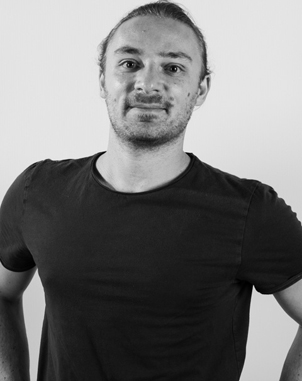
“On The Neverending Story, we did a completely new scan of the original negative film in 4K for a UHD-HDR remastering. It was a real pleasure to grade this beautiful 35mm film, shot by Jost Vacano.”
Details
Colourist: Aljoscha Hoffmann
Role: Colourist
Web: CinePostproduction




